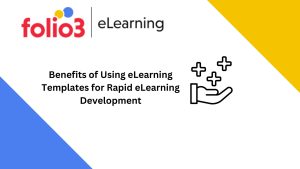
Types of Instructional Design Methodologies
There are two ways to go about it when looking at instructional theories. They are either instructor-focused, or they are learner-focused. In both situations, the goal is the same: For the learner to grasp concepts and retain the knowledge imparted with the instructions, whatever form they may be in. Instructor-based theories focus more on lectures and memorization, whereas learner-based theories are more student-guided and self-directed. Other than this, there are also social learning theories and motivational learning theories
We have compiled a list of specific instructional design theories and models for you to read about and research from a design and development point of view. This is so that you can make a better, more informed decision about the instructional theory you want to use for your new e-learning course.
1) Merrill’s Theory
According to Merrill’s Principles of Instruction, learning is facilitated and promoted under certain circumstances. Firstly, when the mode of instruction is problem-centered. Secondly, when instructions always include demonstrations. And lastly, when the mode of instruction activates the learner’s existing knowledge base. The theory dictates that the mode of instruction should also provide ample opportunity for the learner to apply what they have learned and practice it in the real world. In simpler words, there are four phases for Merrill’s task-centered approach to learning: demonstration, activation of the learner’s existing knowledge, application of what is learned, and finally, integration into the real world. The theory also focuses on scaffolding, when the learners are slowly and gradually introduced to complexities as the lesson progresses and concepts are cleared.
2) Situated Cognition Theory
This theory stems from the concept of “learning is doing.” It emphasizes that you cannot separate knowing from actually doing something, which is when learning takes place. The theory also stresses how vital it is for learners to apply what they have learned to reinforce it. Hence, learning, in this case, is more than the accumulation of information and retention of knowledge. This is better seen in a learner’s performance as it improves while solving real problems over time. Situated Cognition Theory is well suited for employee training programs.
3) The ADDIE Model
ADDIE is an acronym for the following: Analyze, Design, Develop, Implement, and Evaluate. This instructor-focused model isn’t a learning theory. It is a proven facilitation device that helps Instructional Design professionals and training developers design and develop e-learning course content. This model helps them do this more effectively, clearly, and concisely. It does this by breaking it down for the course designers and making it easier to concentrate on one step at a time. ADDIE allows the course developers and designers to focus on the learner and his needs. It helps them focus on what learners already know, the learning goals, and desired outcomes. This ensures that a more personalized course can be designed.
4) Individualized Instruction Theory
This theory is learner-focused as implied by the name, allowing students to learn at their own pace. Of the different instructional design theories, this particular one encourages one-on-one learning. It only lets the learner progress if certain goals have been achieved. It even accounts for those individuals who respond better to or prefer different learning methods or preferences. This theory focuses on four principles:
- The learner or student should be able to finish his work independently to know where he needs improvement.
- Every lesson should have an assessment after it to gauge the learner’s progress.
- Written content is preferred over demonstrations and presentations as a learning medium.
- Learners should be supported by the teachers or facilitators, which also adds a social element to the learning experience.
5) The SAM Model
The Successive Approximation Model is a simplified version of another model we discussed earlier: The ADDIE model. The SAM model has been specially designed to obtain feedback. It uses this feedback to build consistently better working models much earlier in the process. The process, at its simplest, consists of three stages: Preparation, Iterative Design, and finally, Iterative Development. The first stage is where information is gathered on the required e-learning project. The second and third stages are where the solution is designed, developed, and reviewed. Since SAM considers feedback, it is highly flexible about multiple iterations and changes being made as the project moves on.
6) Social Cultural Learning Theory
The Sociocultural Learning Theory is a social learning theory, as the name implies. It talks about learning as part of a social process and is also an instructor-focused theory. It implies that social interaction plays a vital role in cognitive development and is a huge part of the learning process. This theory is defined by three key elements: language, culture, and the learner’s zone of proximal development. For instance, co-workers in this context have significant power to influence how a learning employee or worker feels about any particular subject.
7) Bloom’s Taxonomy of Learning Objectives
Bloom’s Taxonomy focuses on classifying learning objectives for learners and students with the help of a hierarchy of processes and it applies to the cognitive domain as opposed to simple memorization of facts and figures. The primary goal of this instructional design theory is to facilitate course designers with a guide or framework that can be used to customize and create learning objectives as well as assessments. The processes in the hierarchy are as follows: Remember, Understand, Apply, Evaluate, Analyze, and Create. Then, as learners move up through the levels, they attain a deeper level of understanding. This is until they reach “creation”, which is the highest level in the objectives.
So how do you know which Instructional Theory is the best for you?
This largely depends on what learning objectives you have set for your e-learning course. It also depends on the subject matter of your course outline and the current skill level of your learners. Again, it also depends on whether they are university students or employees learning a new hard skill at work. Considering all these and more factors, and after conducting proper research on all the instructional design methodologies we have mentioned, you can arrive at the best instructional design theory for achieving your e-learning goals. It is important to remember that relying on one particular theory is not a hard and fast rule. You may take what you like from several theories to formulate your instructional design if it works better for you.












